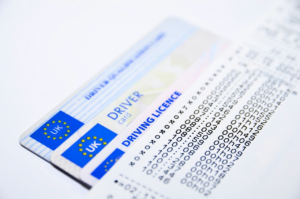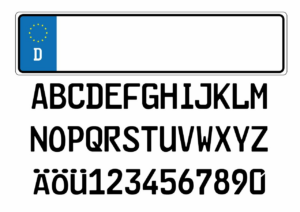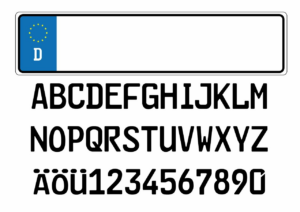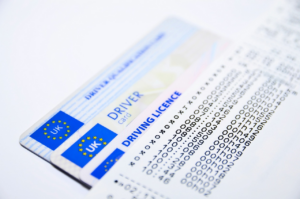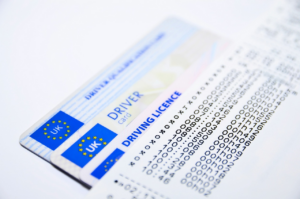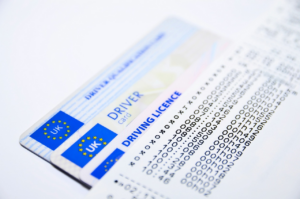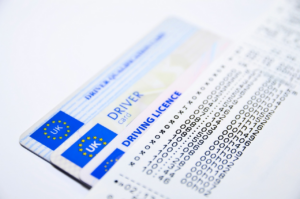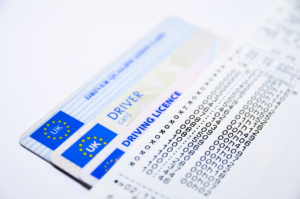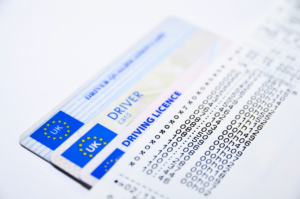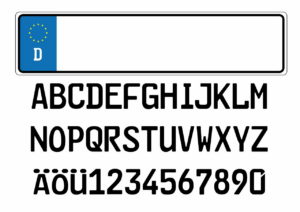Getting your driver’s licence in Australia is an exciting step towards independence and freedom on the road. However, before you can hit the road on your own, you must pass the Australian Driving Licence Practical Test. This test can be nerve-wracking, but with the right preparation and knowledge of what to expect, you can increase your chances of success.
During the Australian Driving Licence Practical Test, you will be assessed on your ability to drive safely and competently in a range of driving conditions. This includes everything from basic maneuvers like starting and stopping the car, to more complex skills like merging onto a highway or navigating through traffic.
Knowing what to expect during the test and how to prepare for it can help you feel more confident and ready to take on the challenge.
Overview of the Australian Driving Licence Practical Test
Get ready to ace your Aussie driving exam with this quick rundown of what’s in store during the big test! The Australian Driving Licence Practical Test is designed to assess your skills and knowledge as a driver.
During the test, you’ll be evaluated on your ability to drive safely and responsibly, follow traffic rules and regulations, and handle different driving situations effectively.
The test is split into two parts: a practical driving assessment and a knowledge test. The practical driving assessment evaluates your ability to drive in different conditions, such as on the highway, in heavy traffic, and in residential areas. You’ll also be tested on your parking skills, including parallel parking, reverse parking, and angle parking.
The knowledge test, on the other hand, evaluates your understanding of traffic rules and regulations, road signs, and safe driving practices. To pass the test, you must score at least 90% on the knowledge test and demonstrate safe driving skills during the practical driving assessment.
Preparing for the Test
Let’s get ready for the big day by prepping for the test! Before you can take the practical test, you need to be well-prepared.
Start by reviewing the road rules and regulations, paying special attention to the ones that are frequently tested. Familiarize yourself with the road signs and symbols, and learn how to interpret them quickly and accurately.
You should also practice driving in different conditions, such as heavy traffic, narrow lanes, and adverse weather. This will help you build confidence, sharpen your driving skills, and prepare for any scenario that might arise during the test.
On the day of the test, make sure you arrive at the testing center at least 30 minutes before your scheduled appointment. This will give you enough time to complete any necessary paperwork, familiarize yourself with the testing area, and relax before the test.
Make sure to bring your learner’s permit, proof of identity, and any other required documents. During the test, pay close attention to the instructions given by the examiner, and demonstrate safe and responsible driving practices.
Remember to stay calm, focused, and confident throughout the test, and you’ll be well on your way to getting your Australian driving license.
What Happens on Test Day
On test day, you’ll need to check in at the designated location and time.
You’ll be required to undergo a vehicle inspection to ensure that your car is safe and roadworthy.
The test duration will depend on the type of license you’re applying for, but it typically lasts around 30-45 minutes.
Checking In
Now it’s time to check in for your driving test, so make sure you have all your necessary documents ready. Arrive at the testing location at least 15 minutes before your scheduled test time.
Upon arrival, you’ll need to check in with the testing officer. Here are three things you need to remember during the check-in process:
- Bring your learner’s permit or license and the confirmation letter for your test.
- Make sure the vehicle you’ll be using for the test is in good condition, with all the required safety features and equipment.
- Be prepared to answer some questions about the vehicle, such as where the hazard lights are located or how to turn on the high beams.
Once you’ve checked in, the testing officer will give you further instructions on what to do next. Remember to stay calm and composed during the check-in process, as it’ll set the tone for the rest of your driving test experience.
Vehicle Inspection
Get ready to inspect your vehicle before the driving test starts – make sure it’s safe and ready to hit the road!
The vehicle inspection is the first step of the practical driving test. You’ll be asked to check if all the necessary safety features of your car are working properly, such as the brakes, headlights, turn signals, and mirrors.
The examiner will also check if your car’s registered, insured, and has a valid license plate. If you fail to complete this step correctly, the test won’t proceed, and you’ll have to reschedule. Therefore, it’s important to prepare your car in advance and ensure it meets all the requirements.
Remember, safety comes first!
Test Duration
You’ll want to know how long the test lasts so you can mentally prepare and pace yourself accordingly, making sure you have enough time to showcase your driving skills and impress the examiner.
The driving test usually takes around 30 to 45 minutes, but can vary depending on the location and traffic conditions. During this time, you will be tested on your ability to drive safely and efficiently, following traffic rules and regulations, and making correct decisions while driving.
It’s important to remember that the driving test is not a race, and you should take your time to demonstrate your skills. Rushing through the test may result in mistakes and lower your chances of passing.
The examiner will be paying close attention to how you handle different driving situations, including intersections, roundabouts, and changing lanes. Stay focused, calm, and confident, and remember to follow the examiner’s instructions throughout the test.
With proper preparation and practice, you can ace the driving test and obtain your licence.
Driving Maneuvers Tested
The section on driving maneuvers tested is where you’ll demonstrate your ability to reverse park, perform a three-point-turn, and execute a hill start. These maneuvers are crucial skills that every driver must possess, and you’ll be expected to perform them flawlessly during your practical test.
During the reverse park, you’ll be asked to park your car between two vehicles or alongside a curb. You’ll need to show that you can position your car safely and accurately within a limited space.
The three-point-turn requires you to turn your car around in a tight space, demonstrating your ability to control the vehicle in a confined area.
Finally, the hill start test involves stopping and starting on a slope. You’ll need to show that you can apply the handbrake, release the clutch smoothly, and accelerate without rolling backwards.
Practice these maneuvers beforehand to increase your chances of passing the test on the first try.
Criteria for Assessment
Now it’s time to discuss how your driving skills will be evaluated in order to determine whether you’re ready to hit the road with your shiny new license. During the practical driving test, the examiner will use a set of criteria to assess your driving skills. These criteria include three main areas: observation, control, and hazard perception.
The table below breaks down each of these areas and lists the specific skills that will be assessed within them. Make sure to review this table and practice these skills before your test to give yourself the best chance of passing on the first try.
| Area | Skills Assessed | |
|---|---|---|
| Observation | Checking mirrors, scanning surroundings, checking blind spots, signaling intentions | |
| Control | Steering, accelerating, braking, gear changing, parking | |
| Hazard Perception | Identifying potential hazards, reacting appropriately, maintaining safe distance, anticipating other drivers’ actions | , adjusting speed and position accordingly. |
Common Mistakes to Avoid
As you prepare for your driving assessment, it’s important to be aware of common mistakes that could hinder your chances of passing on the first attempt.
First and foremost, ensure that you’re familiar with the vehicle you’ll be driving. Adjust your mirrors, steering wheel, and seat before starting the car. Failure to do so could result in unnecessary distractions during the test.
Secondly, make sure you’re always aware of your surroundings. Keep an eye on your blind spots and use your mirrors frequently. Additionally, be cautious of pedestrians and other vehicles on the road. One mistake could lead to a failed test.
Lastly, avoid breaking any traffic rules during the assessment. Always stick to the speed limit and obey traffic signals and signs. Failing to do so could result in automatic disqualification.
By keeping these common mistakes in mind and avoiding them, you can increase your chances of passing the driving assessment on the first attempt.
What Happens After the Test
After taking your driving assessment, it’s time to find out whether you aced it or need to hit the books a little harder. The examiner will give you feedback on your performance and let you know whether you passed or failed.
If you passed, congratulations! You’ll receive your provisional licence in the mail within a few weeks. If you failed, don’t worry. You can take the test again after a certain period of time, usually a few weeks or months, depending on the state or territory you’re in.
If you passed, it’s important to remember that you’re still a new driver and there’s always room for improvement. Take the time to reflect on your driving experience and think about areas where you can improve. Consider taking additional driving lessons or courses to build your skills and confidence on the road.
And always remember to drive safely and responsibly, following all traffic laws and regulations.
Conclusion and Final Tips for Success
Don’t underestimate the importance of reflecting on your driving experience and seeking additional training, as there’s always room for improvement even after passing the test. Take the time to analyze your driving habits and identify areas where you can improve.
For example, if you tend to speed or struggle with parallel parking, practice these skills until you feel confident. You may also want to consider taking a defensive driving course to further improve your skills and increase your safety on the road.
In addition, make sure to stay up-to-date on any changes to driving laws and regulations. It’s important to know the rules of the road and follow them to avoid accidents and legal trouble.
Finally, always practice safe driving habits and avoid distractions while behind the wheel. Remember, passing the test is just the first step in becoming a safe and responsible driver.
Frequently Asked Questions
What is the minimum age requirement to take the Australian Driving Licence Practical Test?
To take the Australian driving licence practical test, you must be at least 16 years old. This is the minimum age requirement set by the Australian government and applies to all states and territories.
However, it’s important to note that some states may have additional requirements, such as completing a certain number of hours of supervised driving before taking the test. It’s recommended to check with your local transport authority for specific requirements and regulations.
Can you bring a translator or interpreter to the test?
During the Australia driving licence practical test, you may bring a translator or interpreter with you. This is particularly helpful for those who aren’t confident in their English language skills.
However, the translator must be authorized by the licensing authority and can’t be a friend or family member. It’s important to note that you must still be able to understand and respond to instructions given by the examiner during the test.
The presence of a translator should not obstruct the test process and should only be used as a means of communication.
What happens if you fail the test?
If you fail the Australia driving licence practical test, you’ll have to wait at least seven days before you can take it again. You’ll also have to pay another testing fee.
It’s important to review and practice the areas where you struggled during your first attempt to increase your chances of passing the second time around. Remember to stay calm and focused during the test, and don’t be afraid to ask your instructor any questions if you’re unsure about a certain task.
Is it possible to reschedule the test if you are unable to attend on the scheduled date?
If you’re unable to attend your scheduled driving license practical test in Australia, you can reschedule the test. However, you’ll need to provide a valid reason for your absence and may have to pay a fee to reschedule.
It’s important to contact the licensing authority as soon as possible to inform them of your situation and to arrange a new test date. Keep in mind that rescheduling your test may also delay the process of obtaining your license, so it’s best to try and attend your original test date if possible.
Are you allowed to use your own car for the test or must you use a provided vehicle?
You’re allowed to use your own car for the Australia driving licence practical test, provided that it meets certain requirements. The vehicle must be roadworthy, have current registration, and display L-plates. Additionally, it must be equipped with a handbrake that is accessible to the examiner from the passenger seat.
However, if you don’t have access to a suitable vehicle, you can use a provided vehicle for the test. It’s important to note that you must have a supervising driver with you at all times if you choose to use your own vehicle.
Regardless of whether you use your own car or a provided vehicle, the test will cover a range of driving skills and maneuvers, including parking, reversing, and emergency stops.
Conclusion
Congratulations! You’ve now reached the end of this article about the Australian Driving Licence Practical Test. By now, you should have a clear understanding of what to expect during the test, how to prepare for it, and what to do on test day.
Remember to practice as much as possible before the test, and take note of the criteria for assessment to ensure that you don’t make any common mistakes.
On test day, stay calm and focused, and remember to follow the instructions of the examiner. If you do make a mistake, don’t panic, just keep driving safely and confidently.
With these tips in mind, you are well on your way to passing the test and obtaining your Australian driving licence. Good luck, and happy driving!


